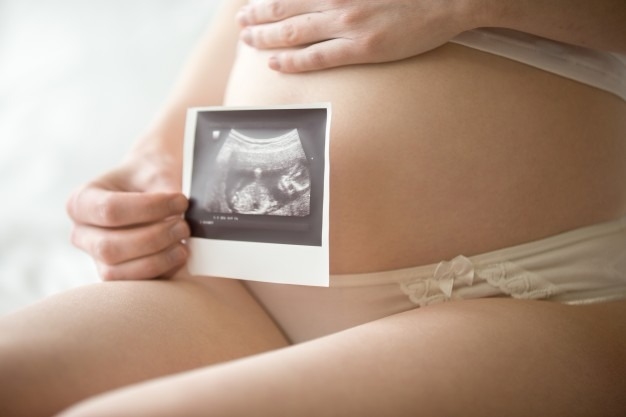
Hydramnios: Excess Amniotic Fluid
12 Dec 2017 | 3 min Read
Babychakra
Author | 1369 Articles
Is it possible to identify hydramnios when you are pregnant? Are there some signs and symptoms that can be identified? Hydramnios are common in women these days, where the baby gets surrounded by too much amniotic fluid during pregnancy. It can further cause some complications in both mother and child. Generally, It comes in two types- Polyhydramnios and Chronic Polyhydramnios. Let’s understand more about hydramnios, causes, and treatment. Keep on reading.
What Is Hydramnios?
Hydramnios is a condition in which excess amniotic fluid is present in the amniotic sac that carries the baby during pregnancy. This yellowish fluid surrounds the baby throughout pregnancy. Amniotic fluid is essential for adequate growth and development of the baby as it contains specific nutrients and enzymes. Generally, pregnant women have about 500 to 1000 ml of amniotic fluid. However, too much amniotic fluid can lead to complications during pregnancy.
Read More: What is Amniotic Fluid Index
Causes Of Hydramnios During Pregnancy?
Hydramnios can occur due to several reasons. Either too much amniotic fluid is being produced or there is a problem in its absorption by the fetus, both of which maintain the balance of adequate quantity needed inside the amniotic sac. One of the causes of hydramnios in the mother can be diabetes. Factors of the baby like chromosomal abnormalities, heart failure, twin-to-twin transfusion syndrome, and gastrointestinal problems can lead to accumulation of amniotic fluid.
Symptoms Of Hydramnios
Symptoms of hydramnios include rapid growth of the uterus, uterine contractions, and a feeling of heaviness and discomfort in the abdomen. However, all affected women will experience these symptoms differently. Hydramnios is usually diagnosed on an ultrasound test by measuring the amniotic fluid volume.
H2: Why Is Hydramnios A Matter Of Concern?
Too much amniotic fluid can lead to excessive enlargement of the uterus, leading to early or premature labor. This is known as premature rupture of membranes as the bag of water breaks earlier than the anticipated nine months. It may also lead to congenital disabilities in the uterus. When the water breaks (rupture of the amniotic sac), the loss of a large amount of liquid may also cause an early rupture of the placenta or a collapse of the umbilical cord, both of which need immediate medical intervention for fear of complications.
H2: Treatment Of Hydramnios
Treatment for hydramnios is usually based on the general health and the severity of symptoms shown. Your healthcare provider will closely examine the level of amniotic fluid during the entire course of your pregnancy and provide medications if needed. In some cases, doctors may remove some amount of amniotic fluid for diagnostics. This is known as amnioreduction with amniocentesis and helps detect disorders in the baby. If there are any complications that may pose a risk to the baby or the mother, the baby may be delivered early.
Disclaimer: The information in the article is not intended or implied to be a substitute for professional medical advice, diagnosis or treatment. Always seek the advice of your doctor.
Also read:
Anomaly Scan: An Effective Tool To Detect Defects In The Baby Before Birth
Related Articles:
Pregnancy Complications: Here are some of the pregnancy complications list you need to watch out for during pregnancy. Check them out here!
Polycystic Ovarian Disease: Everything you need to know about Polycystic Ovarian Disease (PCOD).
Pertussis Disease Vaccination During Pregnancy: To protect yourself and your newborn from pertussis, must know about its vaccination during pregnancy.
A


Related Topics for you
Suggestions offered by doctors on BabyChakra are of advisory nature i.e., for educational and informational purposes only. Content posted on, created for, or compiled by BabyChakra is not intended or designed to replace your doctor's independent judgment about any symptom, condition, or the appropriateness or risks of a procedure or treatment for a given person.
